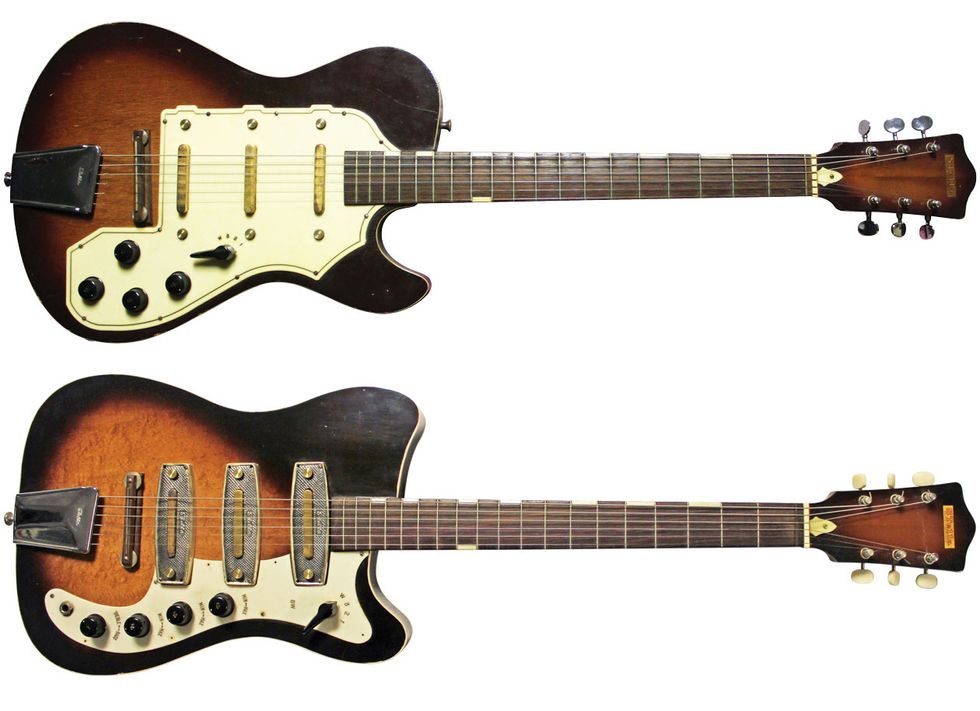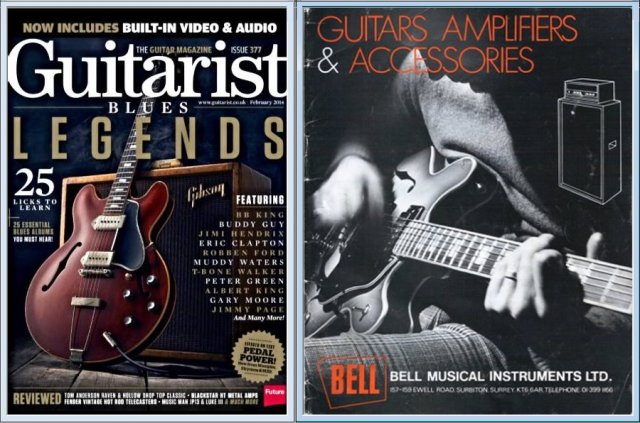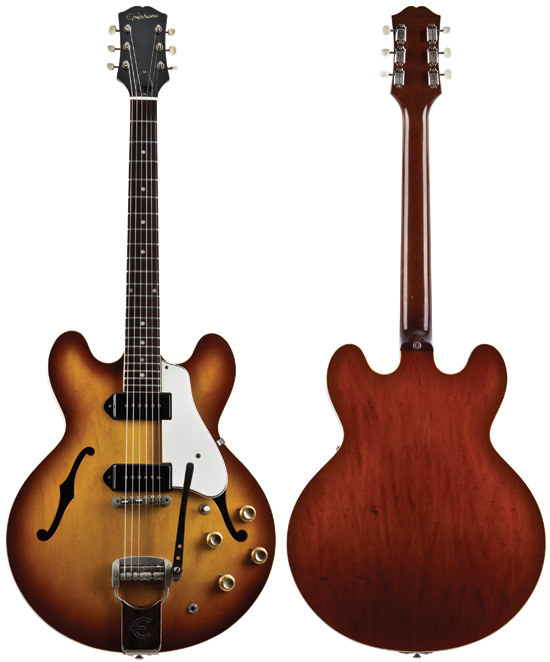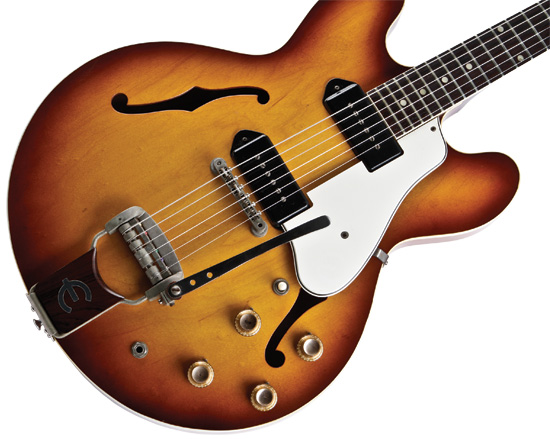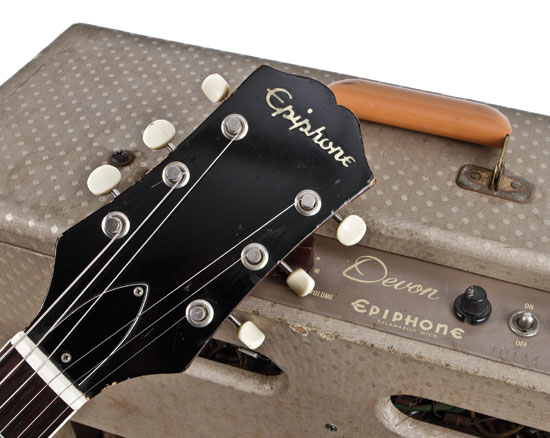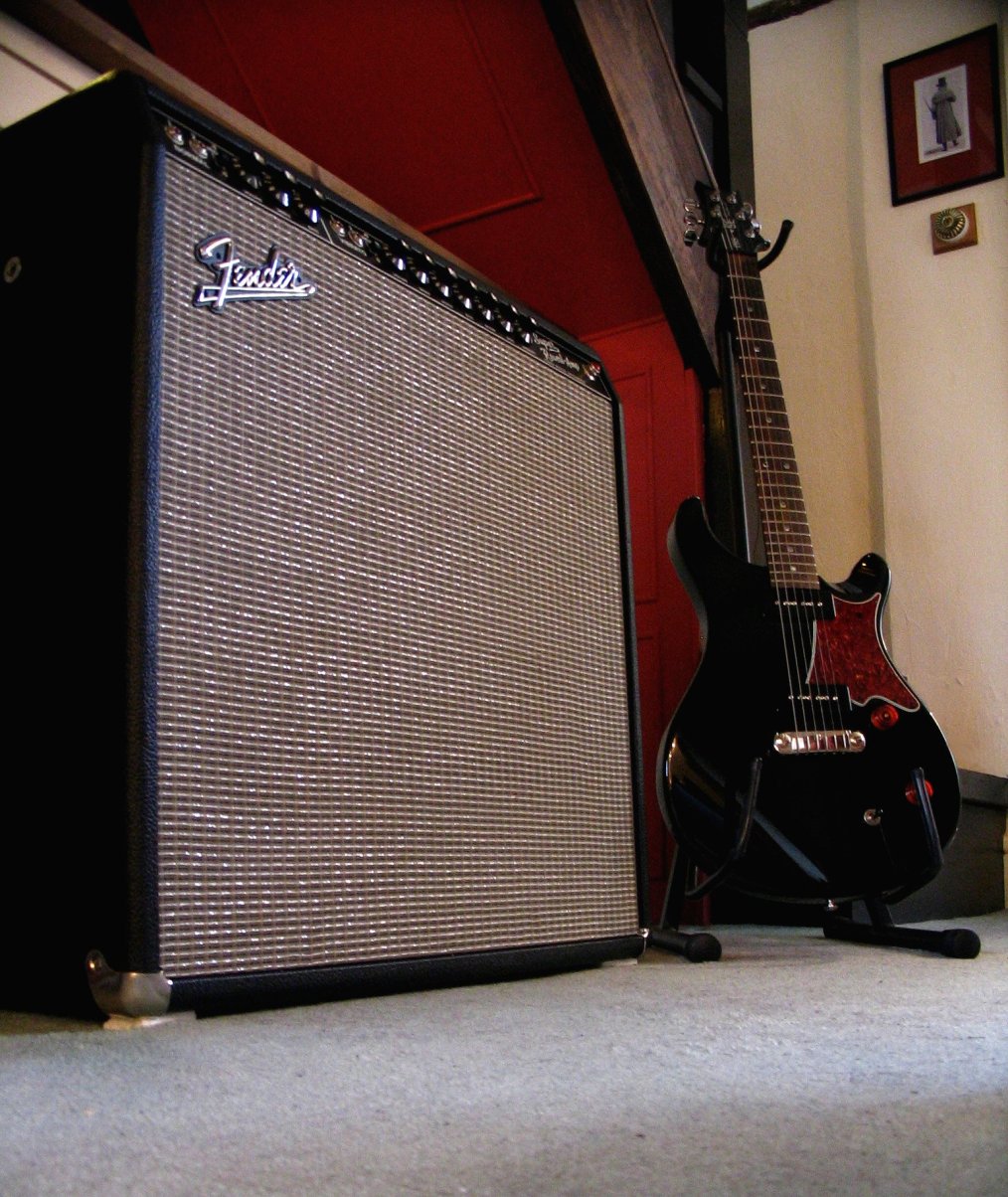It was the fad of guitars made ‘for the masses’ in the 1960s for them to be somewhat space-age in their design. This nurtured a generation of wide-eyed youngsters to not only believe that you had to actually plug an ‘electric guitar’ into the mains (don’t !) but that they were something that would take you to another world if you owned one! Even notable artists of the newly burgeoning scene were not all brandishing Fenders and Gibsons (in the UK these USA imports were prohibited following the end of World War II) and so many other left-field manufacturers and models are to be seen in old footage of the day on Youtube.
One make of guitar many kids saw regularly and probably exclusively were Teisco guitars sold in FW Woolworths stores and branded Auditon.

Teisco produced over a million guitars during the course of its history, but there are also a few million more Japanese–made guitars that are decidedly not Teiscos.
However, it’s important to note that all of these companies were Original Equipment Manufacturer (OEM) producers for a variety of brands both in Japan and abroad.
This means that a company (for example, Strum and Drum of Wheeling, Illinois) could approach a Japanese manufacturer (in this case, Sakkai) and ask it to produce a guitar branded for that contracting company’s in–house brand name (Norma).
Often, these guitar brands would source guitars from multiple manufacturers to fit different price points in their catalogues. The Norma brand has guitars that were made by Teisco Gen Gakki, Sakkai, and Tombo, as well as several other manufacturers.
This guide looks at all of the different guitar manufacturers working in Japan in the 1960s so that you can begin to differentiate between their products and get a better idea of what you’re buying.
Teisco

C.1964 Teisco WG-4L
If we’re talking about guitars that are often mistaken for Teiscos, we need to start out talking about Teisco, which has a bit of a confusing history.
Teisco started making lap steels in the late 1940s, and by the ‘50s were making solid bodies and archtops. The company enjoyed increasing success right through the big Japanese guitar boom in 1965, but a 1967 downturn in fortunes resulted in the company and brand being sold to Kawai.
Teisco’s subsidiary manufacturing plant Teisco Gen Gakki (Japanese for “Tesico Stringed Instruments”) was not included in the sale, as Kawai decided to transfer manufacturing to its own plant in Hamamatsu.
Using Gold Foil Pickups to Identify Teiscos and other Vintage Japanese Guitars
Original Teisco factory guitars from before the Kawai sale can be some great players, and many of them feature highly sought after gold foil pickups made famous by Ry Cooder. But beware, many Japanese manufacturers made gold foil pickups that share some characteristics with Teisco’s, yet are not the same.
How can you tell these gold foils apart? Look for the fake set–screw pole pieces. On a true Teisco gold foil pickup, these six screws are on top of the pickup. But with Zen-On’s (or several other manufacturers’) gold foil pickups, these set–screw pole pieces run through the middle.

True Teisco Gold Foil Pickup

Non–Teisco Gold Foil Pickup
Teisco Gen Gakki
Originally the subsidiary manufacturing plant supplying bodies and necks to Teisco from 1963 to 1967, Teisco Gen Gakki continued as an independent company and continued to manufacture bodies and necks for a number of new companies (Honey, Idol, Firstman) emerging from the original Teisco ashes. All of these shortly went bust.
It also manufactured OEM guitars for domestic and overseas brands (most notably Norma) before going bankrupt sometime around 1970. Interestingly, guitars made at this factory never used plywood for bodies.

C. 1967 Idol PL-24

C.1968 Teisco Firebird Bass
Kawai
Kawais are probably most often mistaken for Teiscos because Kawai bought the Teisco brand name in 1967 and continued to make familiar Teisco guitars, while adding new models every year. Though sometimes sharing some similar looks, Kawai guitars tend to be a bit inferior to original Teisco guitars, especially when it comes to the wiring and pickups.

C.1964 Kawai S-180 String Bar
There is one good way to distinguish a Kawai (or a Kawai–era Teisco) from an original Teisco: look for a string bar on the headstock. Kawai used this feature on a majority of its solid bodies, while original Teisco guitars never used string bars and instead favoured pitched headstocks.
Kawai continued to produce Teisco–branded guitars, amps, and even synthesizers in dwindling numbers up through the mid–‘70s. Occasionally, Kawai has periodically produced reissues of the most famous Teisco guitars: the K-series shark fins and the Spectrum 5.
Zen–On
Zen–Ons are No. 2 on the list of guitars most often mistaken for Teiscos. The Zen–On brand name is relatively unknown outside of Japan, but it produced a large number of OEM guitars for overseas brands.
As mentioned earlier, many of its guitars included a gold foil pickup that looks deceptively like the original Teisco’s. Zen–On also used plywood on almost all of its guitar bodies, though its top of the line and Morales–branded guitars sometimes featured two–piece sandwich style construction.

C. 1965 Zen-On ZES-170

C.1965 Zen-On ZES-220
Fujigen

C. 1966 Greco 912
Fujigen went on to achieve lasting fame as the manufacturer of Greco guitars in the ‘70s and Fender Japan in the ‘80s and early ‘90s. But Fujigen’s work in the ‘60s is our focus. The Fujigen hardware is the easiest way to tell these guitars apart from Teiscos. For example, Fujigen embossed “mic 1” and “mic 2” into their metal control plates, while Teisco did not. This is just one example, but it requires a bit of reading and studying about the nuances of that hardware to positively identify the Fujigens for what they are.
Fujigen was the largest exporter of guitars to the USA, with Kawai coming in a close second. Fujigen also used solid woods for the bodies, and worked closely with Matsumoku factory in the city of Matsumoto.
Many of these models still exist (in largely varying degrees of non-playability and incompleteness) and are increasingly finding their way onto ebay and Reverb.com to be met with a degree of nostalgic aspiration-over-logic all over again!
